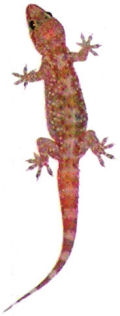The Snake Pretending to be a Stick
Out lizard hunting one morning I saw a pair of very fast, thin snakes which crossed the dirt road in front of me, side by side, their heads held high off the ground. The two looked like a team, and this sent a thrill through me. I’d never seen snakes do this before. Their movements and attitude denoted high intelligence, and they looked somehow professional, like pack hunters.
All the snakes I was familiar with were loners and they kept low to the ground, moving in the traditional slithering way of snakes. In contrast, these two held themselves up like cobras, and even when they crossed over into the tall grass I could see their little black heads darting back and forth, very alert. They saw me coming after them and zoomed quickly to a nearby tree.
There was nothing slow about these snakes. It didn’t take them more than a few seconds to slide right up that tree and into the branches. Then they did something really interesting: they froze.
The only reason I could see them in the tree is because I’d watched them climb. To anyone else they’d be invisible. Their bodies were telling the world, “We’re tree limbs! There’s nothing interesting here. Go about your business.” Even as I approached the tree they maintained this façade. Even as I began to climb.
There was one snake lower than the other, and so I moved carefully toward that one. It was thin and dark, and there were no obvious poison sacks on its head. I had an idea of what kind of snakes they were, but didn’t know for sure. I thought it was funny that it was going to stay there and let me grab it. I kept expecting it to shoot away. Lord knows that, on the ground, I would never have been able to catch it.
Okay, I thought. Here goes nothing.
I reached out and grabbed it as close to the head as I could, which wasn’t nearly close enough. The moment I touched it, the snake whipped its head around and bit me. It locked its jaws about four inches above my left wrist, and it hurt. I didn’t let go, but I was holding on to tree limbs with the other hand and couldn’t do anything about the snake. I had to climb down the tree one handed, even as blood began streaming down my arm and dripping from my elbow. I kept wondering if I was wrong – wondering if this was a poisonous species after all.
I slowly, carefully, made my way down the tree. Once on the ground I was able to grab the snake’s head and pull it off my arm. Instead of the fang marks I feared, there was a neat, elongated oval of bloody holes. Then I saw the snake’s teeth, which were long and curved. Up until that point I’d never seen teeth like that on a snake, ever.
It began whipping violently, trying to get loose, but I managed to slip it into my specimen bag and close it tight. It made a real ruckus inside that bag. Its partner, still up in the tree, had climbed all the way to the top and was pretending to be a stick again … but it was watching me.
I was a long way from the boat, so I stopped at a clear stream and rinsed my arm until it stopped bleeding, then began my long trek back. It was noon when I finally reached the boat. My mom applied bandages to my arm and both she and Dad kept asking me if I was sure it wasn’t poisonous. I was sure, because by then I had already looked it up in my field guide.
The snake was called a Racer (Coluber constrictor), and was described as arboreal and its main diet consisted of birds. This explained why it would pretend to be a stick, and also why it had such large curved teeth. These snakes sit in the trees waiting for birds to land, and before the birds know what’s happening they’ve become lunch.
Later I let this snake go back in the area where I’d caught it, hoping it would find its hunting partner. I thought perhaps they were a mated pair. Nowhere in any of the field guides did it mention these snakes staying together in pairs or groups. I may have witnessed a fluke, or some behavior no one had ever seen before.
That was one cool snake, but one I’d advise people to leave alone. If I look really close at my arm, I can still make out the scars from that bite.
From Tales of the Lizard Hunter
By Jerry J. Davis
